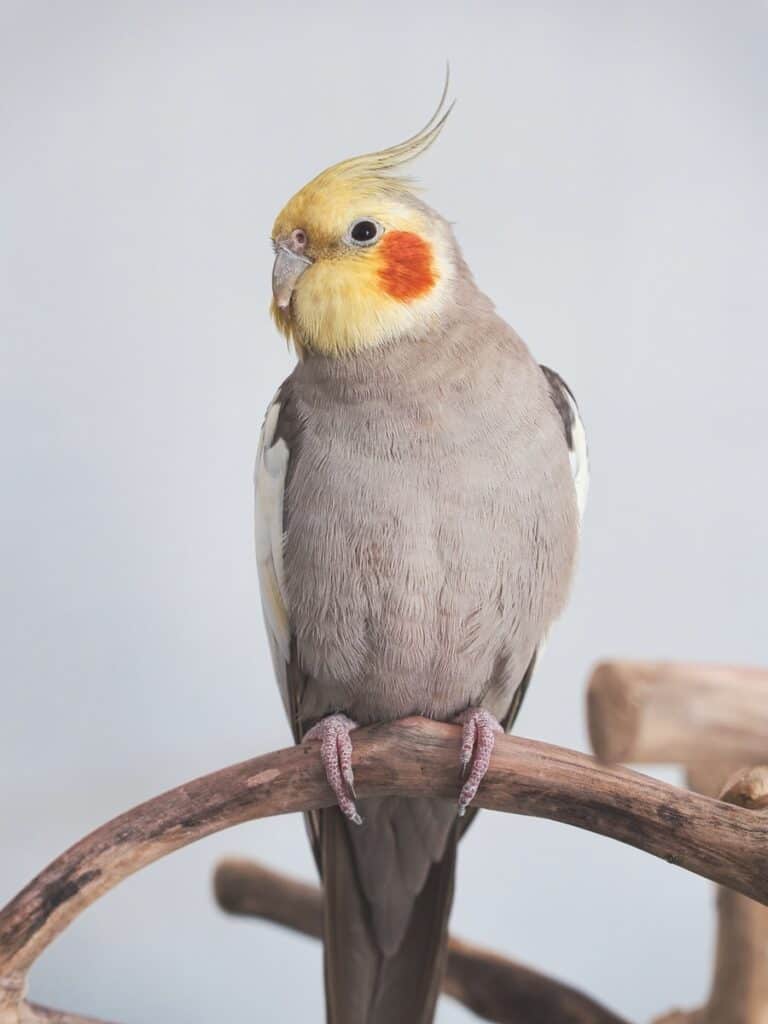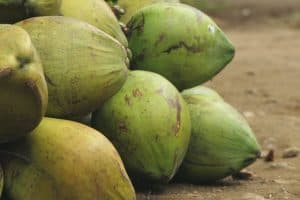Color is produced on Cockatiels by pigments. Melanin pigments, for example, create the darker hues such as blue and grey. Carotenoid pigments are used to produce yellow pigmentation and oranges.
Cockatiels with pigment mutations have altered or muted pigment genes. Pigment changes may be inherited from one generation to the next, allowing breeders to develop distinct colors and patterns when breeding Cockatiels. Here are nine cockatiel color mutations and variants that you should be aware of:
1.Pearl Cockatiel
Cockatiels with white pearls on their bodies, wings, and heads are uncommon. These spots are referred to as pearls because of their appearance. The majority of the time, pearl spots are white. Cockatiels with orange cheek patches occasionally have a hint of light yellow on the face.
2.Gray Cockatiel
The white cockatiel is considered normal grey cockatiel because it does not have any pigment gene mutations. Their bodies are grey with white markings on their wings and tails. Cockatiels come in a variety of colors, with bright orange cheek patches being one of the most popular. When fully grown, female adults develop yellow head that contrast their dark grey body, while males acquire entirely yellow heads. One of the most popular cockatiel hues is orange.
3.Silvery Grey Cockatiel
Cockatiel color variants are caused by a number of pigment gene variations, including those that cause their originally grey coloring to fade. Their grey feathers appear silvery as a consequence of their changes. The wing and tail feathers have some white markings. Their cheeks are typically yellow or orange, while the head feathers become more yellow in color.
4.Yellowface Cockatiel
Cockatiels with yellow cheek patches are similar to normal grey ones, but the colors on their cheeks are instead of orange cheek patch. They may have white or yellow feathers on the top of the head as well. Their bodies should be grey and white, with color variations showing only on the head.
5.Fallow Cockatiel
The body of an autumn or cinnamon cockatiel is a dull yellowish-brown. The wings and underside may still have some grey tinge to them. Their eyes might be tinted red, and their white heads may be golden orange.
6.Whiteface Cockatiel
The Magpie is a medium-sized bird that resembles the Yellowface and Grey (ordinary) in coloration, but it lacks yellow or orange cheek markings. Adult males have white heads with grey marks, while adult females are entirely grey.
7.Pied Cockatiels
The white coloration on their bodies has been completely diminished in these cockatiels, which have random white patches. These white areas may be irregular or round, and they can be found all over the body. As a result, no two Pied cockatiels individual are exactly alike. The Pied cockatiel also has orange cheeks and yellow top feathers.
8.Lutino Cockatiel
The Lutino cockatiel does not produce melanin, so it has no grey shading. The majority of the bodies of these birds are white, but they may have light yellow coloring around their wings. Their cheeks are orange, their eyes are red, and they have a yellow tinge to their faces.
9.Blue Cockatiel
Blue Cockatiels are white all over, but have black wing markings and blue tails. They do not have any colored patches on their cheeks, and they seldom have a yellow hue to the head as other cockatiel types do. The male is entirely blue, with a golden tail and orange head. The female’s breast area is white and the lower part of her body is dark brown. They are one of the most uncommon cockatiel species kept in captivity.
- Learn More About Cockatiel Diet: For more information on what your cockatiel can safely eat, check out this guide on bean sprouts.
- Safety First: It’s crucial to understand which foods are harmful to your feathered friend. For example, you might be curious about leeks or even jackfruit.
- Treats and Risks: Some human foods can be risky for cockatiels. Discover whether it’s safe to share a treat like ice cream with your pet.



